5 Best Grass Types for Charleston, SC
BY MELANIE JOSEPH | MAY 8TH, 2023 | CHARLESTON, LAWN CARE, SOUTH CAROLINANestled along the picturesque coast of South Carolina, Charleston is a city known for its vibrant culture, historic architecture, and lush greenery. From sprawling parks to manicured lawns, the Holy City boasts an array of outdoor spaces that showcase the beauty of the Lowcountry.
However, maintaining a healthy and vibrant lawn in Charleston can be challenging due to the city’s hot and humid climate, which can wreak havoc on many grass varieties. To help homeowners and landscapers choose the best grass for their lawns, here’s a list of the five best grass types for Charleston.
- Warm-Season vs. Cool-Season Grasses
- 5 Best Warm-Season Grasses for Charleston
- FAQ About Charleston Grass Types
Warm-Season vs. Cool-Season Grasses
Warm-season and cool-season grasses have distinct differences in growth patterns and requirements.
Warm-season grasses: As the name suggests, these grass varieties grow actively and thrive during summer – when the temperature is between 80 to 95 degrees Fahrenheit. They go dormant and turn brown during winter, so they should be planted in late spring or early summer.
Cool-season grasses: The ideal temperature range for them to thrive is typically between 60 and 75 degrees Fahrenheit, which is why they’re most active in the spring and fall and struggle in the summer heat.
In Charleston, warm-season grasses are the best option for lawns because they are well-suited to the region’s long, hot summers and can tolerate drought and high temperatures. Some of the most common warm-season grasses you’ll find in the area include centipedegrass, bermudagrass, and Zoysiagrass.
5 Best Warm-Season Grasses for Charleston
Explore the most common grass types available for Charleston lawns and choose the one that will best help you achieve your goals for your outdoor space.
1. Bermudagrass
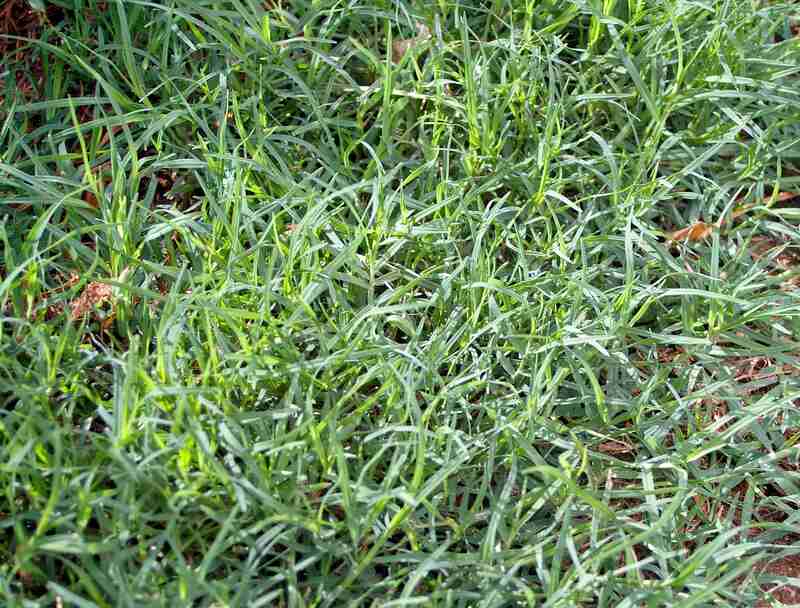
Photo Credit: Bidgee / Wikimedia Commons / CC BY-SA 3.0
Bermudagrass is a popular grass variety for lawns, golf courses, and athletic fields in Charleston, and for a good reason. This hardy grass type can stay pretty while it tolerates heavy foot traffic and withstands the city’s unique climate and environmental challenges.
One thing homeowners love about bermudagrass is its ability to thrive in full sunlight. This grass variety requires a lot of direct sunlight to grow and remain healthy, making it an ideal choice for homeowners who have lawns exposed to full sun throughout the day.
Bermudagrass also has a high tolerance for drought, meaning it can continue to grow and remain green even during periods of low rainfall or high temperatures.
Classification: Warm-season grass
Spreads by: Stolons and rhizomes
Shade tolerance: Low – some cultivars need more time in the sun than others
Drought tolerance: High – but may become dormant in long periods of drought
Foot traffic tolerance: High
Maintenance needs: Moderate to high – requires frequent watering, fertilization, and mowing
Recommended mowing height: 1-2 inches – raise the mowing height to retain more moisture during drought or extreme heat
Potential for disease: Moderate resistance – can be prone to brown patch, dollar spot, leaf spot, and spring dead spot
Potential for pests: Low resistance – mostly prone to white grubs, hunting billbugs, mole crickets, and armyworms
Soil pH: 6-6.5
Soil type: Grows in almost all soil types
Other notes: Homeowners may find this grass species appealing due to its remarkable ability to grow rapidly. But its aggressive growth can have adverse effects as it may invade and take over other meticulously maintained areas and plant beds.
2. Carpetgrass
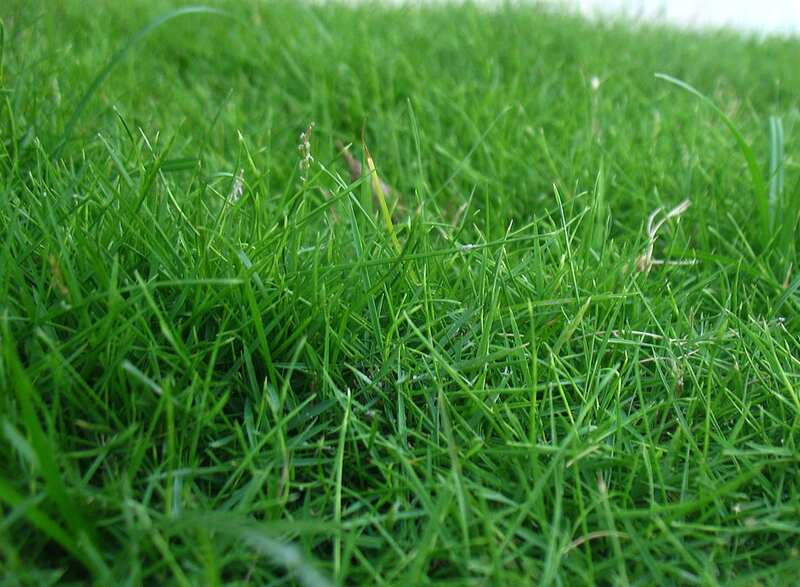
Photo Credit: Sugeesh / Wikimedia Commons / CC BY-SA 3.0
Despite its resemblance to crabgrass, this grass variety has unique characteristics that make it a desirable option for homeowners facing challenging lawn conditions. For example, its ability to thrive in drought-prone and nutrient-poor environments makes it an ideal choice where other grass types may find it hard to survive.
While other grass varieties struggle in areas with limited sunlight, carpetgrass can grow and flourish in shaded areas, making it an excellent option for lawns surrounded by trees or other structures that block out the sun.
Also known as Louisianagrass, this grass variety can withstand flooding and other water-related challenges. It can tolerate standing water for extended periods, making it an ideal choice for Charleston homes threatened by hurricanes, heavy rainfall, and flooding or properties with poor drainage.
Moreover, carpetgrass requires minimal maintenance as it can grow without additional fertilizers, pesticides, or herbicides. Although, some homeowners may still opt to apply nitrogen to promote growth.
Classification: Warm-season grass
Spreads by: Stolons
Shade tolerance: Moderate – less shade-tolerant than St. Augustinegrass
Drought tolerance: Moderate – its shallow roots won’t survive in dry conditions
Foot traffic tolerance: Low to moderate
Maintenance needs: Moderate to high – Requires weekly mowing to control its tall seed heads
Recommended mowing height: 1-2 inches
Potential for disease: Low resistance – mostly prone to large patch
Potential for pests: Low resistance – can be prone to nematodes and white grubs
Soil pH: 5-6
Soil type: Sandy, acidic, infertile, moist but not muddy
Other notes: Often propagated through seeds, this grass type doesn’t fare well in dry climates.
3. Centipedegrass
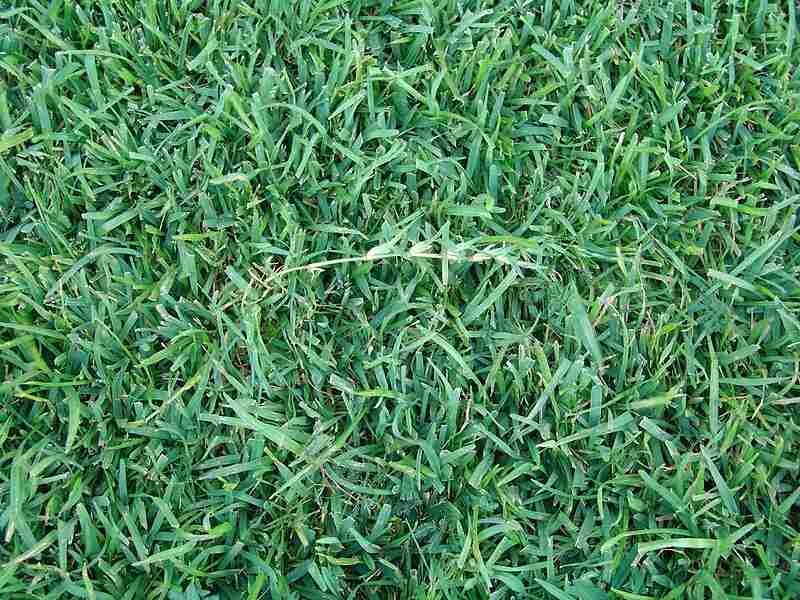
Photo Credit: James Becwar / Wikimedia Commons / CC0 1.0
Centipedegrass is a popular grass type in South Carolina, thanks to its ability to produce dense lawns that demand minimal upkeep. Due to its slow growth rate, it doesn’t require frequent mowing, so you won’t need to spend hours each week tending to your lawn.
Furthermore, this resilient grass can survive in nutrient-deficient and acidic soils. Its light color and medium texture are well-suited to the region’s soil types and climate conditions. Since it’s resistant to most pests and diseases, centipedegrass is a great option for homeowners who want to avoid using chemicals and pesticides on their lawn.
However, its primary limitation is its inability to withstand heavy foot traffic. As such, it’s best suited for areas with minimal activity and not recommended for homeowners who often host barbecue parties in their backyards.
Classification: Warm-season grass
Spreads by: Stolons
Shade tolerance: Moderate – thrives in areas that receive abundant sunlight but can still grow well with as little as six hours of sun exposure per day
Drought tolerance: Low to moderate – may turn brown and become dormant during extended periods of drought
Foot traffic tolerance: Low
Maintenance needs: Low – grows well even with minimal watering, mowing, and fertilization
Recommended mowing height: 1.5-2 inches – increase the mower height by 1/2 inch for lawns in shaded areas
Potential for disease: Moderate resistance – mostly prone to centipedegrass decline and iron chlorosis
Potential for pests: Low resistance – can be prone to mole crickets, sod webworms, spittlebugs, nematodes, and ground pearl insects
Soil pH: 5-6
Soil type: Acidic, infertile, and well-drained soils
Other notes: Avoid overusing fertilizers and excessive nitrogen levels to maintain a balanced ecosystem in your lawn, discouraging the proliferation of harmful lawn diseases and pest infestations.
4. St. Augustinegrass
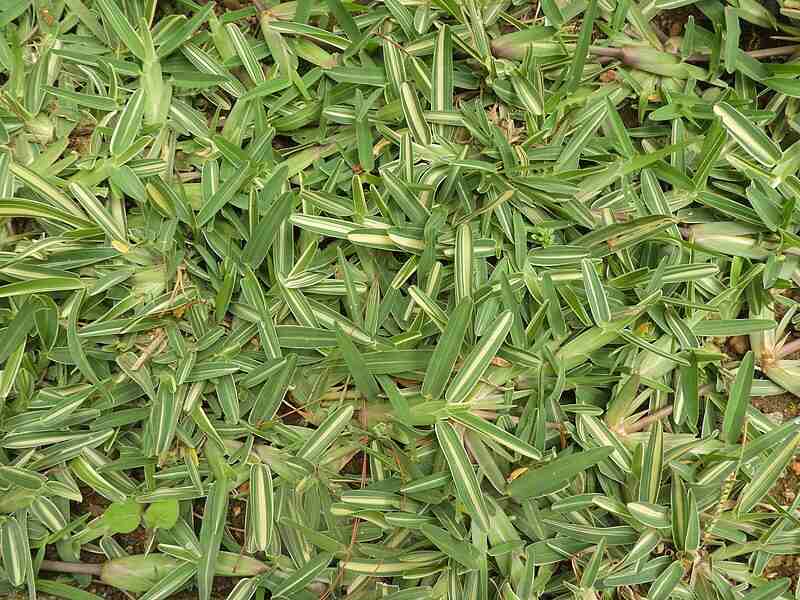
St. Augustinegrass
Photo Credit: Yercaud-elango / Wikimedia Commons / CC BY-SA 4.0
St. Augustinegrass, also known as Charleston grass, is a popular choice for lawns in coastal homes. It can tolerate both sandy and clay soils, which are common in many areas of Charleston. Homes along the Carolina coast can benefit from this grass variety’s ability to tolerate heat and salt while preferring warm winters and moist soil conditions.
This grass type’s flat stems and broad leaves create a dense turf, resulting in a lush and beautiful blue-green lawn. Due to its thick growth, St. Augustinegrass is effective at crowding out most weeds. But it can be prone to fungal diseases and pests like chinch bugs. As such, you should take preventative measures to protect your lawns from these potential threats.
Classification: Warm-season grass
Spreads by: Stolons
Shade tolerance: Moderate – some cultivars are more shade-tolerant
Drought tolerance: Moderate
Foot traffic tolerance: Moderate
Maintenance needs: Moderate to high – needs frequent watering, mowing, and fertilization
Recommended mowing height: 2.5-4 inches (mow tall in shade, standard cultivars 3-4 inches, and dwarf cultivars 2.5-3 inches)
Potential for disease: Low to moderate resistance – common diseases include large patch, take-all root rot, and gray leaf spot
Potential for pests: Low resistance – mostly prone to grubs, chinch bugs, armyworms, cutworms, grass loopers, mole crickets, and webworms
Soil pH: 6-7.5
Soil type: Grows in most soil types but prefers moist (not muddy) and moderately fertile soils
Other notes: Indigenous to coastal areas, St. Augustinegrass favors damp soils and temperate winters, but it can flourish even in inland regions as long as proper growing conditions are met. Although, it wouldn’t do well in compacted, clay soils.
5. Zoysiagrass
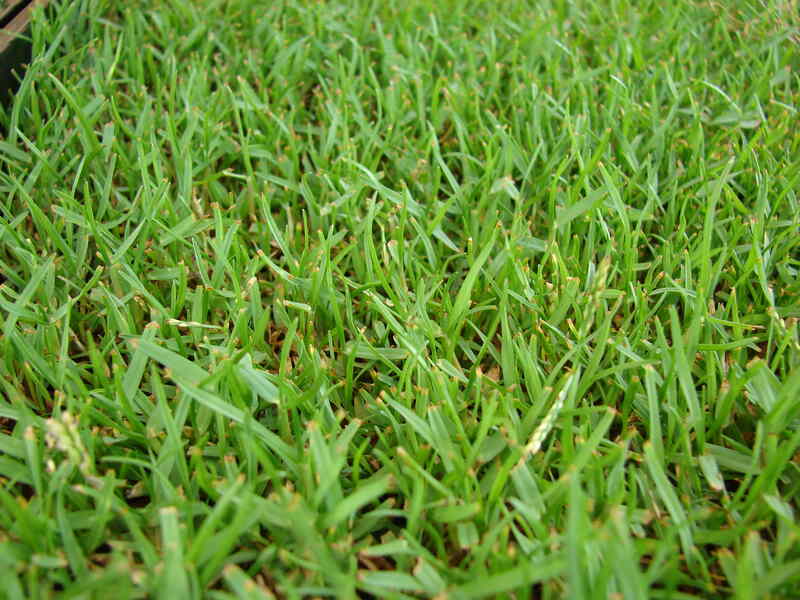
Photo Credit: Forest and Kim Starr / Flickr / CC BY 2.0
Zoysiagrass is a popular choice for homeowners who want a lawn with a beautiful, light to medium green hue and dense coverage. While different varieties of Zoysiagrass have varying characteristics, most have a medium to coarse texture.
What makes Zoysiagrass especially great for Charleston is its remarkable ability to thrive in any soil type, be it sand, loam, or clay, and its salt tolerance. Additionally, this grass type is incredibly versatile – able to withstand heat, drought, and even cold weather. It has deep roots that can reach up to 6 feet underground, allowing it to access moisture and nutrients even during periods of low rainfall.
This grass variety’s dense growth pattern allows it to handle heavy traffic and activity with ease, making it perfect for families with pets and children. While it requires minimal maintenance, adding nitrogen during the growing season can support its carpet-like growth.
Classification: Warm-season grass
Spreads by: Stolons and rhizomes
Shade tolerance: Low to moderate – it needs adequate sun exposure
Drought tolerance: High – although you need to give it supplemental water during dry periods
Foot traffic tolerance: High
Maintenance needs: Low to moderate
Recommended mowing height: 1-2.5 inches
Potential for disease: Moderate resistance – common diseases include spring dead spot, rust, pythium blight, powdery mildew, root decline, brown patch, curvularia, dollar spot, leaf spot, and fairy wings
Potential for pests: Moderate resistance – can be prone to mole crickets, sod webworms, grubs, hunting billbugs, armyworms, nematodes, and chinch bugs
Soil pH: 6-6.5
Soil type: Grows in most soil types but thrives in well-drained soils
Other notes: This turfgrass is a popular pick for those who frequently host outdoor gatherings in their backyard, as it can easily handle heavy foot traffic.
FAQ About Charleston Grass Types
Two grass types are perfect for shady areas in Charleston – St. Augustinegrass and centipedegrass. St. Augustinegrass is known for its high tolerance to shade and can thrive even with just four hours of sunlight per day. With excellent drought tolerance and disease resistance, it is well-suited for Charleston’s warm and humid climate.
On the other hand, centipedegrass is a low-maintenance option that also tolerates shade well. It has a fine texture and medium green color, making it ideal for any Charleston landscape.
Dogs love running around the backyard during playtime hours, so you need a resilient grass type that can withstand high paw traffic and pet activities. Zoysiagrass is known for its durability and ability to recover quickly from damage, making it an ideal choice for pet owners.
Additionally, this grass variety tends to have fewer issues with common lawn pests and diseases, which can be a concern for those who want to keep their pets safe and healthy while playing outdoors.
Bermudagrass is another grass type that can withstand heavy foot traffic on your Charleston lawn. This grass variety is known for its tough, durable texture, making it an ideal option for areas that receive a lot of wear and tear.
During dormancy, grass enters a state of hibernation to conserve resources and energy during periods of environmental stress such as extreme cold, heat, or drought. As a result, the grass appears brown or straw-colored and shows no signs of new growth. The blades become dry and brittle, making them more susceptible to damage and not spring back up after being compressed. Footprints left on dormant grass will remain longer than on healthy grass.
Remember that dormancy is a natural process for grasses, allowing them to survive until conditions improve. When the weather warms up or cools down and there is sufficient moisture, the grass will come out of dormancy and start to grow again. Avoid walking on the dormant grass during this time to prevent unnecessary damage. Also, continue basic lawn care, such as mowing and watering, to ensure the grass stays healthy during dormant periods.
Choose the Right Grass for Your Charleston Landscape
Picking the right grass variety can be the key to achieving the lush, vibrant lawn of your dreams. With several grass types available, you can choose a low-maintenance option or one that can tolerate the Holy City’s unique environmental challenges the most.
Consider factors like the amount of sunlight your lawn receives, soil type, and water availability to select the ideal grass type for your needs. Whether you’re drawn to the resilience and drought tolerance of Zoysiagrass, the thick and luscious texture of St. Augustinegrass, or the durability of bermudagrass, there’s a grass variety that is perfect for your lawn.
Reach out to a Charleston lawn care professional today, and create the backyard paradise that your family and friends will enjoy.
Main Image Credit: Paul Gillett / Geograph / CC BY-SA 2.0